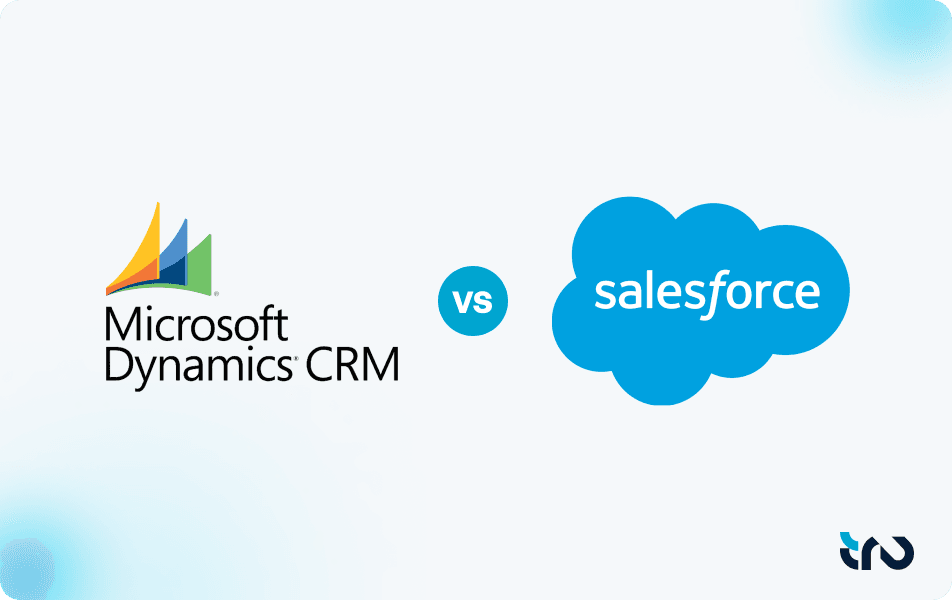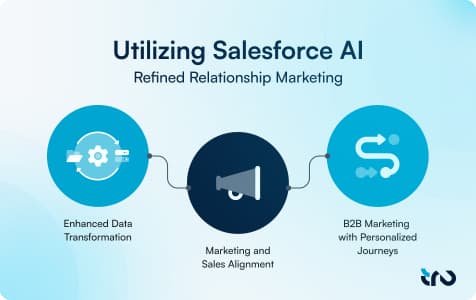Not all Salesforce partners are built the same. Some bring enterprise-grade technical depth, certified implementation teams, and a defined roadmap tied to outcomes. Others deliver delays, vague promises, and missed expectations.
In 2025, the difference between a streamlined Salesforce integration and an expensive digital misstep hinges on one strategic choice - who gets hired.
This checklist is designed to cut through the noise. It details exactly what decision-makers should evaluate, what strategic questions to ask, and how to select Salesforce integration partners aligned with enterprise goals, technology stacks, and long-term ROI.
Before signing any contract, start here.
How to Use This Checklist to Hire Salesforce Integration Partners
Hiring a Salesforce integration partner shouldn’t feel like guesswork. The checklist is designed to guide teams through a structured, step-by-step process that simplifies decision-making and reduces risk.
Each stage is built with intention, helping teams move from planning to action with clarity. The checklist follows a logical path that adapts to different business sizes, industries, and integration goals. It begins by helping define technical requirements and leads into shortlisting qualified experts based on real needs.
The goal behind every step is to find trusted Salesforce implementation partners who bring both technical expertise and long-term value to the table.
Let’s break it down.

Step 1: Define & Evaluate Your Salesforce Integration Needs
Start by identifying key goals. This could include streamlining operations, syncing customer data, or connecting Salesforce with other platforms. Then, assess the complexity - whether it involves APIs, middleware, or custom solutions. Reviewing real use cases and trusted Salesforce services can help define what’s realistic and necessary.
Once the scope is defined, set a budget and timeline that fit both the business needs and technical demands. Finally, outline specific pain points such as data silos or manual workflows that the integration should solve. This early clarity enabled organizations to engage partners with the right domain expertise and delivery capability.
Step 2: Identify Required Expertise and Certifications
Every Salesforce integration initiative demands a specific blend of technical skills and proven experience. Start by checking for Salesforce certifications, such as Integration Architect or Mulesoft Developer. These credentials signal hands-on experience in handling complex, multi-system environments.
Next, confirm whether the partner has relevant experience across the appropriate Salesforce clouds–including Sales, Service, or Marketing Cloud, and tools like MuleSoft, Zapier, or custom APIs. Industry-specific experience can also make a big difference, especially in sectors like healthcare, finance, or retail.
This step helps narrow down the search and ensures alignment with Salesforce development services tailored to meet enterprise-level needs.
Step 3: Find Top Salesforce Integration Partners
Start by exploring credible sources like AppExchange, Salesforce community groups, and peer referrals. Prioritize partners with a proven track record in integration-specific projects rather than general development work. Review portfolios to assess if past projects match your scope and industry.
Shortlist partners based on business alignment, response time, and client feedback. A trusted partner shows results and transparency without overselling. Keep the focus on those who demonstrate a clear understanding of integration goals and can transform them into measurable results.
This step helps narrow your list to only those who offer relevant Salesforce development services backed by real-world success.

Step 4: Evaluate Technical Capabilities of Top Partners
Once the shortlist is ready, review each partner’s technical depth. Request a detailed breakdown of their tools, workflows, and integration process. Look for experience with specific platforms your team uses, not just generic capabilities.
Security and compliance are essential. Ensures the partner understands and adheres to data handling standards relevant to your region or industry. If feasible, test their approach through a proof-of-concept.
This stage confirms which Salesforce development company has both the systems knowledge and execution strength to handle the full project lifecycle.
Step 5: Conduct In-Depth Interviews with Shortlisted Partners
Use interviews to assess soft skills and working dynamics that don’t appear in written proposals. Understand insights into how each team manages timelines, communicates updates, and collaborates during critical phases.
Ask scenario-based questions to see how they handle real challenges. This gives a clearer picture of how partners perform under pressure and manage risks. Client references can further validate their claims.
This phase ensures that the selected Salesforce implementation partner understands the technical requirements and also leads with accountability, agility, and confidence during high-stakes execution.
Step 6: Onboard Your Salesforce Integration Partner
Successful onboarding starts with clearly defined goals, timelines, and responsibilities. Ensure both internal and external teams are aligned on the integration scope, KPIs, and how progress will be measured.
Schedule regular check-ins and give internal stakeholders visibility into project milestones. Share system documentation, workflows, and access protocols early to maintain momentum and avoid misalignment. If necessary, arrange hands-on training for internal teams ahead of go-live.
This step ensures that the selected integration partners can transition smoothly into execution, with minimal disruption and strong collaboration from day one.
Hiring In-House vs. Hiring a Salesforce Integration Partner
According to Salesforce’s Report, companies risk missing out on up to 50% revenue growth when systems and teams aren’t aligned. That is why the proper integration setup isn’t just a technical decision, it directly impacts business performance.
When it comes to building that setup, enterprises typically have two options: invest in in-house capabilities or engage an external integration partner.
An in-house team offers direct control but demands significant investment in recruitment, onboarding, and continuous upskilling. It suits businesses with continuous Salesforce needs and the budget to support a long-term internal team.
In contrast, a Salesforce integration partner brings deep experience, scalable support, and faster results. It’s especially useful for complex, one-time projects or when internal bandwidth is limited. Ultimately, the right decision depends on timeline, operational capacity, and business goals — but for many, partnering offers the clearest path to faster outcomes and scalable value.
Conclusion
Finding the right Salesforce integration partner isn’t just a technical task but a strategic decision that shapes how well systems, teams, and data work together. From defining integration needs to onboarding the right experts, each step in the checklist is designed to simplify the hiring process and improve outcomes.
The goal is clear: partner with a team that brings certified expertise, real-world experience, and long-term value.
Tru helps enterprise teams integrate Salesforce faster, smarter, and without friction. Whether you're launching a complex build or scaling your CRM capabilities, we deliver end-to-end solutions tailored to your goals.



